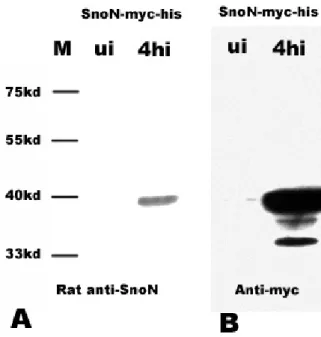Signaling networks involved in patterning dorsal chorion structures in Drosophila
Inaugural-Dissertation zur
Erlangung des Doktorgrades
der Mathematisch-Naturwissenschaftlichen Fakultät der Universität zu Köln
vorgelegt von Bhupendra Shravage
aus Pune, Indien
Köln, 2005
Bericherstatter:
Prof. Dr. Siegfried Roth PD Dr. Thomas Klein
Tag der muendlichen Pruefung: 8 February 2006
Acknowledgements
First and foremost I thank Siegfried Roth for his thorough guidance, help, criticisms and allround support. I learnt a lot from him.
I thank all the Roth lab members, past and present for a wonderful co-operative atmosphere, especially Claudia Wunderlich and Martin Technau. I am thankful to Maurijn for his comments on my thesis. Oliver Karst assisted me in creating transgenic flies. I am thankful to Dr. Linne von Berg for helping me with Scanning Electron Microscopy.
I thank Professors of my graduate programme, especially Late Jose’Campos- Ortega, Maria Leptin, Mats Paulsson and group leaders Thomas Klein, Frank Sprenger and Veit Reichmann for their guidance and help. I am thankful to Eberhard Rudloff, Kristina Rafinski, Sebastian Granderath and Brigitte Wilcken-Bergmann for administrative help.
Financial help from Graduate School (IGSGFG) and SFB572 is gratefully acknowledged.
Special thanks to Nelly for giving me a wonderful company and for being there at times when it really mattered. And last but not the least, I would like to express a deep sense of gratitude to my parents and family for their constant support and encouragement.
Bhupendra Shravage
(To my parents)
CONTENTS
ACKNOWLEDGEMENTS ABBREVIATIONS
1. INTRODUCTION...1
1.1 Patterning of a developmental field ... 1
1.2 Competence of cells ... 2
1.3 Drosophila oogenesis ... 3
1.3.1 Egg chamber formation ...3
1.4 Patterning of the follicular epithelium... 7
1.5 Genes affecting patterning of the follicular epithelium... 9
1.6 EGF signaling cascade ... 12
1.7 Model for patterning of dorsal appendages ... 16
1.8 TGF−β−β−β signaling cascade ... 18−β 1.8.1 Regulation of TGF- β signaling...22
1.8.2 Ski and Sno oncoproteins ...23
1.8.3 Mechanism of Ski/SnoN action ...25
1.8.4 Role of Ski and SnoN in specification and differentiation...26
2. AIM OF THE RESEARCH WORK ...29
3. RESULTS ...30
3.1 Dpp forms a gradient along the AP axis in the follicular epithelium... 30
3.2 Misexpression of dpp in the follicle cells expands dorsal cell fates along the AP axis... 33
3.3 Loss of Dpp signaling in the follicular epithelium renders them unresponsive to Grk signaling ... 37
3.4 Misexpression of Grk from the germline dorsalizes the eggshell ... 44
3.5 Combined misexpression of Grk and Dpp leads to novel eggshell phenotypes ... 48
3.6 Cloning of SnoN and its expression of during oogenesis ... 51
3.7 snoN is expressed as a dorsolateral stripe in the follicular epithelium during oogenesis. ... 54
3.8 snoN expression in the follicular epithelium depends on Grk and Dpp... 59
3.9 Generation of a snoN mutant ... 62
3.9.1 sno N-/- is a molecular null allele. ...63
3.9.2 SnoN is required for formation of operculum and dorsal appendages...64
3.9.3 SnoN inhibits Dpp signaling in ovary and in wing ...68
3.10 brk and sog are expressed in distinct domains in the follicular epithelium ... 69
3.10.1 Loss of Sog in follicle cells leads to induction of ectopic dorsal appendage material ...75
3.10.2 Loss of Brk in follicle cells leads to expansion of operculum fate ...77
3.11 Dpp inihibitors function redundantly in the follicular epithelium to specify operculum and dorsal appendages ... 79
3.12 EGF targets rho, aos and kek are regulated by Dpp signaling ... 82
3.13 Rho and Aos function are not essential for specification of dorsal midline... 85
4. DISCUSSION ...88
4.1 The Dpp and Grk function in follicular epithelium... 88
4.1.1 The Dpp gradient and prepatterning of follicular epithelium. ...88
4.1.2 Dpp acts as a competence factor in the follicular epithelium ...90
4.1.3 Dpp promotes at least two different cell fates in the main body follicle cells ...93
4.1.4 Distinct levels of Grk signaling specify operculum and dorsal appendage cell fates ...95
4.1.5 Combinatorial signaling by Dpp and Grk specify operculum and dorsal appendage cell fates 96 4.1.5.1 Model for patterning of dorsal chorion structures...97
4.2 Regulation of Dpp gradient activity... 100
4.2.1 SnoN acts as a repressor of Dpp target genes. ...100
4.2.2 Brk acts as a transcriptional repressor of operculum fate genes ...102
4.2.3 Sog controls diffusion of Dpp in the follicular epithelium ...103
4.2.4 Cooperative roles of Dpp inhibitors in patterning of dorsal chorion structures. ...104
4.3.1 Rho and Aos function is essential for maintaining dorsal midline fate...106
5. SUMMARY ...109
6. ZUSAMMENFASSUNG ...111
7. MATERIALS AND METHODS ...113
7.1 Fly stocks and genetics ... 113
7.1.1 Breeding of Drosophila melanogaster...115
7.2 Preparation of egg shell and embryonic cuticle ... 115
7.3 Immunohistochemistry and in situ hybridization... 116
7.3.1 Fixation of ovaries for immunostainings ...116
7.3.2 Antibody staining of ovaries...116
7.3.3 Fixation of ovaries for in situ...116
7.3.4 In situ hybridisation of ovaries ...116
7.3.5 Mounting the stained embryos and ovaries...117
7.4 Molecular Cloning ... 118
7.4.1 Cloning of snoN/ski ...118
7.4.2 DNA work and germline transformation ...118
7.4.3 Production of antibody against SnoN ...119
7.5 Induction of Mitotic clones ... 120
7.6 Western blotting ... 120
7.7 Scanning Electron microscopy (SEM) ... 120
